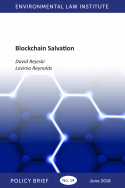
Research Reports
ELI publishes Research Reports available for free download that present the analysis and conclusions of the policy studies ELI undertakes to improve environmental law and policy. These reports contribute to education of the profession and disseminate diverse points of view and opinions to stimulate a robust and creative exchange of ideas. Those publications, which express opinions of the authors and not necessarily those of the Institute, its Board of Directors, or funding organizations, exemplify ELI’s commitment to dialogue with all sectors.
The hype around blockchains—the programming protocol originally created for the Bitcoin—is bidirectional, ranging from apocalyptic predictions of bitcoin energy use that will “destroy our clean energy future” to rosy scenarios that “blockchain technology can usher in a halcyon age of prosperity for all.” The question for policymakers, therefore, is how to ensure that the environment profits in the end.
Read More >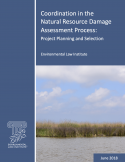
In March 2018, we released a paper on “Coordination in the Natural Resource Damage Assessment Process: General Tools and Mechanisms,” which surveyed some of the general tools and mechanisms available to the Deepwater Horizon natural resource damage assessment (NRDA) trustees to help coordinate their activities. This paper builds on that work: it describes some additional tools that are available during project planning and selection that could help coordinate the trustees’ activities internally within the NRDA program and with external entities.
Read More >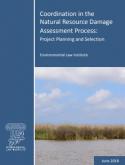
Our report, Coordination in the Natural Resource Damage Assessment Process: Project Planning and Selection, describes some tools that are available to the Deepwater Horizon NRDA trustees during project planning and selection that could help coordinate their activities internally within the NRDA program and with external entities. In particular, it focuses on (1) project screening criteria; (2) strategic frameworks; and (3) joint restoration planning.
Read More >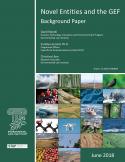
“Novel entities” can broadly be defined as “things created and introduced into the environment by human beings that could have disruptive effects on the earth system.” These may include synthetic organic pollutants, radioactive materials, genetically modified organisms, nanomaterials, and/or micro-plastics. This report, a background paper prepared for the Global Environment Facility (GEF), presents the results of a process developed to systematically identify novel entities that are relevant to the GEF.
Read More >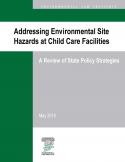
Environmental site hazards may arise from contamination caused by historical uses of a property, or from nearby activities that remain a source of pollution or other environmental health concerns. Identifying and remedying such hazards before a child care facility is licensed, as well as during facility operations, can help prevent and reduce harmful exposures to staff and children. It is especially important to prevent environmental exposures to young children, because their developing bodies may make them more vulnerable to the effects of contaminants.
Read More >